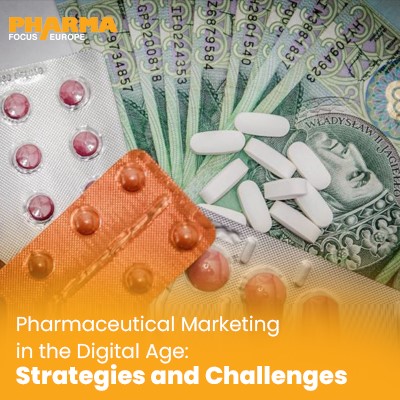Marketing has grown rapidly on social media in the recent past and pharmaceutics is not an exception since it uses content marketing, social media, and SEO, among others. New opportunities include finding new audiences to engage with and developing new forms of interaction, however; there are inherent risks, including regulatory requirements, data privacy, and customers' and users' trust issues. To manage such intricacies, big data marketers must push through their respective keys to success towards attaining marketing objectives while asserting credibility.

Introduction:
Currently, there is a great advancement in the use of technological solutions, particularly under the modern pharmaceutical digital era. Therefore, with increase in knowledge dissemination through internet among the citizenry due to enhanced technology in firms' marketing, pharmaceutical marketing techniques have assumed a new complexion. This shift brings both clearance and risk factors that were not seen earlier for the pharma major players. Consequently, this article aims at discussing the most effective forms of advertising that define the current tendencies of pharmaceutical marketing and the hardships linked with the process.
The Evolution of Pharmaceutical Marketing
Traditional Marketing vs. Digital Marketing
Traditional marketing is a way of advertising goods and services through print, TV, radio, newspapers and magazines, while Digital marketing is a way of advertising goods and services through the Internet, social networks, e-mail and mobile applications.
Earlier forms of pharmaceutical marketing included direct selling, where the majority of pharmaceutical salespeople used to visit the professionals (HCPs) directly. The data indicated that print media, television advertisements, and medical conferences were the main method of advertising of new drugs and treatments. Although these methods are still prevalent, digital marketing has presented some new types of approaches to reaching and influencing HCPs and patients.
Internet marketing employs internet tools, including the website, social media, e-mail and search engine, to communicate. This change has helped the pharmaceutical firms target a wider population, given that the expenses involved in the process are lower and within their control. Patients have also benefited from the new era of advanced technology since they are capable of managing their health better than before, thanks to the available health information on the internet.
Key Digital Marketing Strategies
Content marketing is a way to build a strategy that creates and disseminates material most appreciated by a specific audience in order to retain it. This can involve a blog post, article, a white paper, video, and infographic that contain information on diseases, treatments, and healthy living that creates awareness to the public by the pharmaceutical firms.
With the content being quality educational information, pharma brands can position themselves as authority and begin developing a positive association in the minds of the audience. It also assists in the establishment of the brand and directs clients to their sites through natural searches on the search engine results pages (SERPS).
2. Social Media Marketing
Due to the integration of these social networks, such as Facebook, Twitter, LinkedInand Instagram, pharmaceutical firms are in a position to interact with their audience in real time. Such platforms can be employed to disseminate educational information, make announcements about new products, host question-and-answer sessions, and collect feedback from patients and HCPs.
Patient associations and social media personalities are also influential in creating awareness and making patients aware of different brands, thus increasing the impact of pharmaceutical company marketing.
3. Email Marketing
Electronic mail communication; particularly, the use of email messages and campaigns, continues to be a prominent mode through which pharmaceutical companies interact with HCPs and patients. Using e-mailing can also provide tailored information on new treatments, trial information, and patient education.
With the help of automated email communication, potential buyers can be managed through the stages of the funnel from the recognition stage to the decision-making stage.
4. Search Engine Optimization (SEO)
If the content is not properly optimized, it will not even be revealed for reference when search engine key terms related to the pharmaceuticals are entered. Proper keyword usage within the content of the website, meta descriptions, and back links can thus can assist pharma controlled websites gain better position on SERPS and in turn attract organic traffic.
Thus, SEO strategies should involve the creation of reliable and relevant information to target both HCPs and patients. This includes making posts that provide solutions to people's inquiries, addresses concerns and offer solutions.
5. Paid Advertising
The benefits of pay-per-click campaigns and display advertisements can be considered as the additional ones to the organic one. PPC campaigns allows the pharmaceutical companies to be specific on the particular keywords and demography of the internet users in order to popularize the pharmaceuticals' websites or landing pages.
Advertisement can also be done through web banners and pages, social media platforms to ensure high brand recognition. Marketing can also only be directed to users who have previously been on a pharmaceutical firm's website so they can be reminded to undertake certain activities on the website.
Learn more: https://www.pharmafocuseurope.com/articles/strategies-and-challenges-in-pharma-marketing?divya
Follow us:
| https://www.facebook.com/PharmaFocusEurope | |
| https://www.linkedin.com/company/pharmafocuseurope/ | |
| https://x.com/pharma_eu | |
| https://www.instagram.com/pharmafocuseurope/ | |
| https://in.pinterest.com/Pharmafocuseurope/ |





